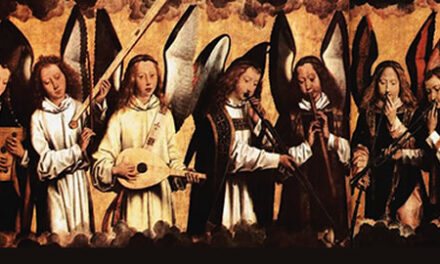The 5th Annual Bluegrass Bash at Thalian Hall, in addition to being a showcase of talented musicians, successfully emphasized a sense of living community.
In an age where bluegrass, or any other genre of folk music, can be streamed anywhere on the internet, it may be easy to forget how critical community is. Newcomers may find bluegrass a simplistic or repetitive genre, but the musical canon of bluegrass was designed to be easily teachable both lyrically and musically. It was important to the original writers that these songs outlive them, which is how music that is over hundreds of years old came to be performed for audiences filming them on their smart phones.
I am happy to report that the organizers of Bluegrass Bash were thinking of the communal aspect of folk when organizing the event. While the event was organized to begin at 7:30 PM with a parking lot party at 6:00, the parking lot party was the true start of the event. Hundreds of bluegrass fans gathered around Thalian Hall, enjoying local beer, eating food provided by local food trucks, all while The Brewer Brothers created a homey ambience with a steady string of casual tunes to relax the listener and set the stage for the evening. Over the course of the hour and a half, the crowd’s mood settled as they drifted into the main hall.
There were few sour notes to the evening. The pre-show music took over in the transition from outside into Thalian Hall once The Brewer Brothers were no longer audible. The pre-show playlist was bluegrass covers of famous nostalgic pop songs. I Wanna Dance with Somebody, Highway to the Danger Zone, and Africa in particular were played more than once. The pre-show music added a level of self-effacing irony that felt out of place with the rest of the event, to the point where I wondered if it was conceived separately from the rest of the show.
Since pre-show music helps create expectations for the performance, as a newcomer to the Bluegrass Bash, I worried that the pre-show’s ironic humor was going to continue throughout the performance. My fears were put to rest as the lights went down and The Folkstone String Band took the stage. A traditional bluegrass trio, their 11-song set was a pleasant collection of standards and songs written to sound like standards. During their performance, it was clear that I was watching three seasoned masters playing music they know well. Bluegrass Bash deserves credit for bringing in North Carolina bands, because it was clear that there were numerous personal fans of the acts in the audience, adding to the sense of community that drove this entire event. I would have liked to have seen a number that showcased Randy Hawse’s banjo playing more; we were promised a “hot banjo number” at one point, but it still felt like a group effort.
On the subject of individual members, Ben Chontos and Jones Smith, in addition to their musical skill, kept a casual banter going that did much to direct the audience’s often uneven energy. It was clear to me that certain members of the audience were there to holler and stomp their feet while others wished to take in the music more calmly. The duo did a fair amount to direct and redistribute some of that energy effectively. It was appreciated.
After a short break, Massive Grass came on for the second set, creating a striking visual as five men armed with different instruments took up the front of the stage, especially as they would often begin their numbers with a short race up to the microphones. With emphasis on speed, this bluegrass performance had the exhilarating energy of watching a race, with the audience cheering or holding their breath as they waited for the musicians to reach the end of the song at an urgent gallop. Slow songs offered short breaks before taking off once again. In contrast to the more traditional sound of Folkstone String Band, Massive Grass has a sound that is still rooted in bluegrass but would also be at home in classic Country or radio folk. The delightful sonic contrast between the two groups kept the night fresh and exciting as the performances felt distinct from each other. Grass had fewer slow songs, which made their nine-song set fly by.
The highlight of the event was the jam session at the end of both sets, because it summarized all the Bash’s best qualities. All three groups played on stage together with a nice, brisk four-song set. The lighting, expertly done throughout the night, was particularly adept at giving the stage some needed depth so all ten musicians could exist simultaneously and move around. I will also join the musicians in shouting out Soundwave Audio for the sound mixing. Even if there were moments during Massive Grass’ set when certain instruments were drowned out, the sound engineering on the final jam was spot on, especially when you consider how musicians were changing instruments during the jam. It was especially exciting to hear how easily three different bluegrass bands could harmonize on the standards they all knew, highlighting the strengths of bluegrass’ canonical approachability. The biggest sign of the jam’s success, however, was the audience, clapping and bobbing along with the music and standing to applaud when it was all over.













